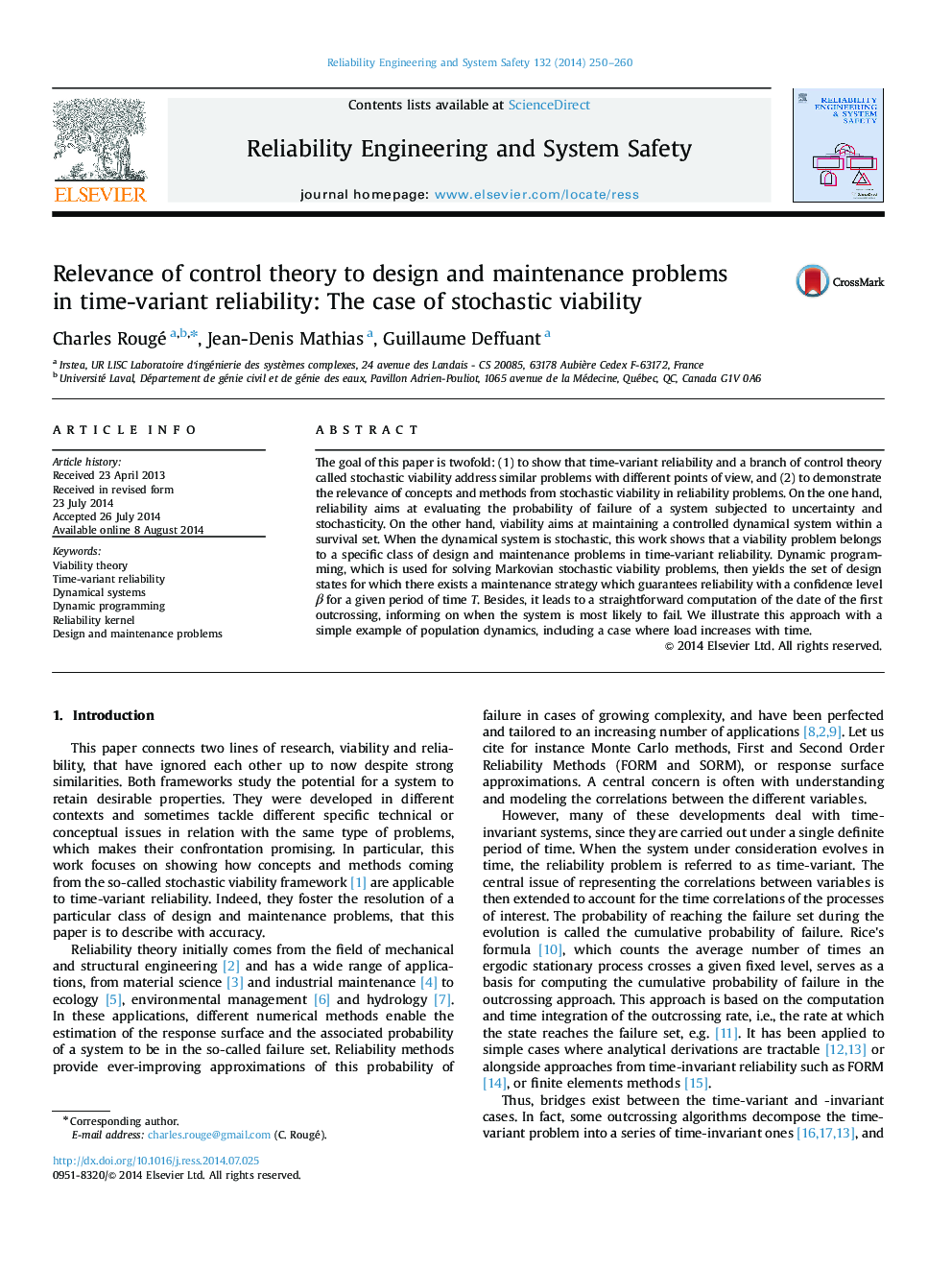| Article ID | Journal | Published Year | Pages | File Type |
|---|---|---|---|---|
| 806756 | Reliability Engineering & System Safety | 2014 | 11 Pages |
•Time-variant reliability tools cannot devise complex maintenance strategies.•Stochastic viability is a control theory that computes a probability of failure.•Some design and maintenance problems are stochastic viability problems.•Used in viability, dynamic programming can find reliable maintenance actions.•Confronting reliability and control theories such as viability is promising.
The goal of this paper is twofold: (1) to show that time-variant reliability and a branch of control theory called stochastic viability address similar problems with different points of view, and (2) to demonstrate the relevance of concepts and methods from stochastic viability in reliability problems. On the one hand, reliability aims at evaluating the probability of failure of a system subjected to uncertainty and stochasticity. On the other hand, viability aims at maintaining a controlled dynamical system within a survival set. When the dynamical system is stochastic, this work shows that a viability problem belongs to a specific class of design and maintenance problems in time-variant reliability. Dynamic programming, which is used for solving Markovian stochastic viability problems, then yields the set of design states for which there exists a maintenance strategy which guarantees reliability with a confidence level β for a given period of time T. Besides, it leads to a straightforward computation of the date of the first outcrossing, informing on when the system is most likely to fail. We illustrate this approach with a simple example of population dynamics, including a case where load increases with time.
